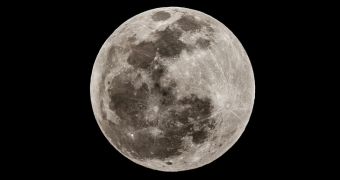By the looks of it, NASA (the National Aeronautics and Space Administration in the US) has some very big plans for astronauts who will set out to explore the moon in the years to come. At least as far as accommodation is concerned, that is.
Long story short, the Administration now says that, all things considered, pits and caves present on the surface of our planet's satellite would make great shelters for daredevils who are ready and willing to spend some time on the moon.
In a press release on its website, NASA further explains that, courtesy of their depth and structure, these formations have high chances to do a great job shielding astronauts from harsh environmental conditions.
The pits and caves would keep them safe from radiation, meteorites that might harm them, dust, and even fluctuations in local temperatures. As specialist Robert Wagner explains, “Pits would be useful in a support role for human activity on the lunar surface.”
Furthermore, “A habitat placed in a pit – ideally several dozen meters back under an overhang – would provide a very safe location for astronauts: no radiation, no micrometeorites, possibly very little dust, and no wild day-night temperature swings.”
On its website, NASA explains that, as shown by investigations carried out over the years, the moon sports millions of craters on its surface. It also accommodates for about 200 pits, some of which researchers suspect end in caves.
Of the pits that have until now been documented on the moon, some measure about 5 meters (roughly 16.5 feet) across. Others are considerably bigger, meaning that they have a diameter of over 900 meters (approximately 2,952 feet).
Given the fact that the Narrow Angle Camera (NAC) aboard NASA's Lunar Reconnaissance Orbiter has until now only delivered an accurate portrayal of about 40% the moon's overall surface, chances are several other such pits are waiting to be discovered.
“We'll continue scanning NAC images for pits as they come down from the spacecraft, but for about 25 percent of the moon's surface area (near the poles) the sun never rises high enough for our algorithm to work,” says Robert Wagner.
“These areas will require an improved search algorithm, and even that may not work at very high latitudes, where even a human has trouble telling a pit from an impact crater,” the researcher goes on to explain.
Some believe that these pits formed in the aftermath of ground collapses brought about by powerful vibrations triggered by meteorite impacts. The voids that formed these pits when collapsing might have been carved by molten rock that once flowed under the lunar surface.

 14 DAY TRIAL //
14 DAY TRIAL //